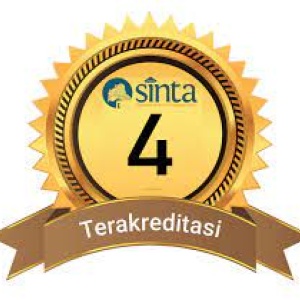Adi Buddha dalam Candra Bhairawa Parwa
DOI:
https://doi.org/10.37014/jumantara.v13i2.3303Keywords:
Adi Buddha, Candra Bhairawa, Yoga Sanyasa, Hermeneutics, ManuscriptsAbstract
This article contained the study of the Adi Buddha in the Candra Bhairawa Parwa (CBP) it's one of the famous classical literature in Bali. The CBP is a part in a hipogram text of the Shiwagama or famous title is Purwagama Shasana. The story of CBP is contained in sargah twelve. Sri Candra Bhairawa is the main figure in this story, he practiced the ideal cult called Yoga Sanyasa. In that devotion, he realized the Adi Buddha; that is the highest primordial principle in other names Bajradhara. This study used hermeneutics theory and method of interpretation by Paul Ricoeur to research Adi Buddha in the CBP. Interpreted the text to know the origin, manifest, and concept realized to the idea of liberating in Yoga Sanyasa and then to know Adi Buddha cult in Bali.References
Askari, S.H. Bodhisattvabhumi: Being the XVth Section of Asangapada's Yogacarabhumi. Varanasi: Tara Printing Works. 1966.
Bhattacharyya, Benoytosh. Two Vajrayana Works. Calcutta: Oriental Institute. 1929.
Buswell, R.E. Jr. and D.S. Lopez Jr. Princeton Dictionary of Buddhism. Princeton: Princeton University Press. 2013.
Coedes, George. Kedatuan Sri wijaya. Depok: Komunitas Bambu. 2014.
Gyatso, Dagpo Lama Rinpoche Jhampa. Introduction to Tantra. Bandung: Dharma Center Kadam Choeling. 2013.
Hammar, Urban. Studies in the Kalacakra Tantra. Stockholm: Department of Etnology, History of Religion, and Gender Studies. 2005.
Hardiman, Budi F. Seni Memahami Hermeneutik dari Schleiermacher Sampai Derrida. Yogyakarta: PT Kanisius. 2015.
Hooykaas, C. Balinese Bauddha Brahmans. Amsterdam: North Holland Publishing. 1973.
Hooykaas, C & T Gourdriaan. Stuti dan Stava Mantra Para Pandita Hindu di Bali. Surabaya: Paramita. 2004.
Kandahjaya, Hudaya. Adi Buddha dalam Agama Buddha Indonesia. -: Forum Pengkajian Agama Buddha Indonesia. 1989.
Kandahjaya, Hudaya. "Sang Hyang Kamahayanikan, Borobudur, and the Origins of Esoteric Buddhism in Indonesia." Esoteric Buddhism In Mediaeval Maritime Asia, v.-, n.-, (2016): 67-112.
Kwon, Do-Kyun. "Sarva Tathagata Tattva Sanggraha Compendium of All The Tathagatas A Study of Its Origin, Structure and Teachings." Disertasi. London: Universitas of London. 2002.
Ricoeur, Paul. Teori Interpretasi. Yogyakarta: IRCiSoD. 2012.
Smellgrove, David. The Hevajra Tantra A Critical Study. New York: Oxford University Press. 1959.
Stutterheim, W.F. Studies in Indonesian Archaeology. Netherland: Konnklijk Instituut Voor Taal-, Land- En Volkenkunde. 1956.
Sura, I Gede dkk. Agastya Parwa Teks dan Terjemahan. Denpasar: Widya Dharma. 2002.
Wayman, Alex. The Buddhist Tantra Light on Indo-Tibetan Esotericism. New York: Routledge. 1973.
Wayman, Alex. Yoga of the Guhyasamajatantra The Arcane Lore of Forty Verses A Buddha Tantra Commentary. India: Indological Publishers. 1977.
Yasa, Putu Eka Guna. "Kisah Pemuja Dan Penjelajah Sarira Dalam Lontar Bali." Prabhajnana: Mozaik Kajian Pustaka Lontar Universitas Udayana. Edisi kelima (2021): 52-73.
Zoetmulder, P.J. & S.O Robson. Kamus Jawa Kuna Indonesia. Jakarta: PT Gramedia Pustaka Utama. 1994.
Downloads
Published
Issue
Section
License
Copyright (c) 2022 Jumantara: Jurnal Manuskrip Nusantara

This work is licensed under a Creative Commons Attribution-ShareAlike 4.0 International License.
- This statement is the author's commitment to respect copyright, both in terms of citing other people's work and utilizing journal content. If necessary, the author can send an Authenticity Statement of Article stating that "this work is the author's original idea and has never been sent to another publisher and published in any publication"
- The author retains copyright.
- The moral rights of publication belong to the author.
- Formal legal aspects in the use of journal publications refer to the Creative Commons Attribution-ShareAlike 4.0 (CC BY-SA) license, which means that journal content can be used freely for any purpose.









